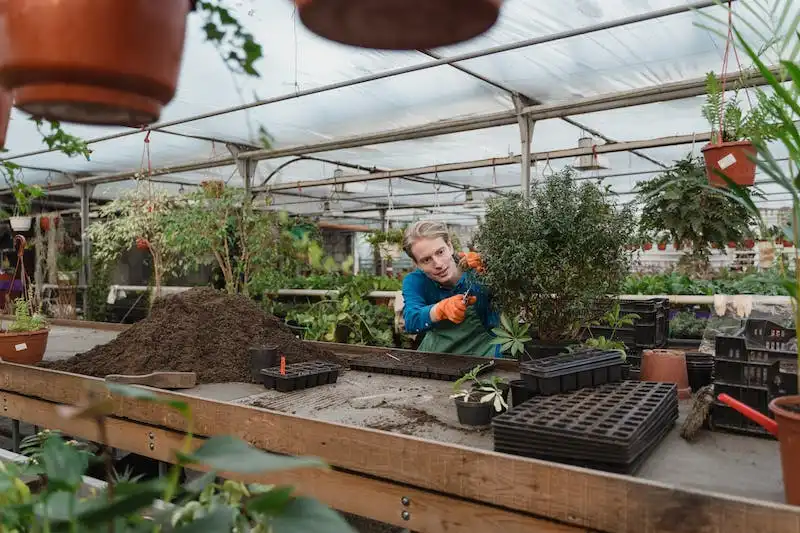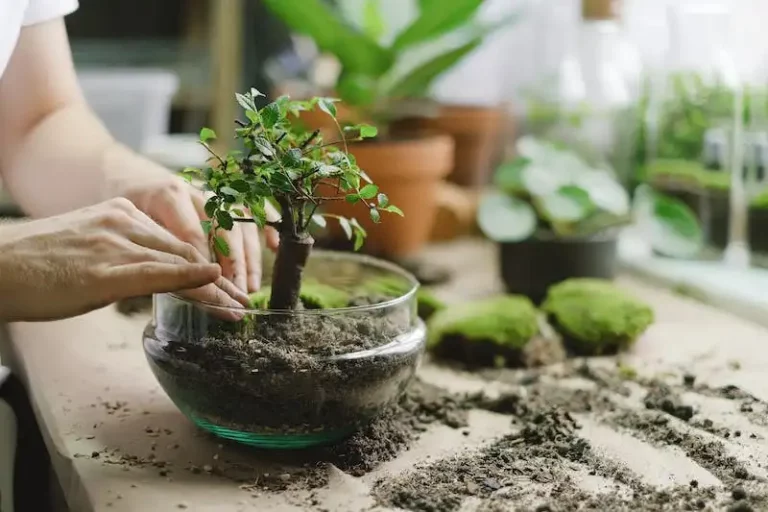Jade plants are popular houseplants that are loved for their beautiful, shiny leaves and their ability to thrive in almost any environment. Whether you’re a seasoned plant enthusiast or just starting out, taking care of a jade plant is easy and rewarding. In this article, we will guide you through everything you need to know to keep your jade plant healthy and thriving.
First and foremost, it’s important to choose the right pot for your jade plant. Jade plants have a tendency to become root-bound, so a small pot is not ideal. Instead, opt for a pot that is slightly larger than the current size of your plant’s root system. This will give the roots room to grow and prevent them from becoming overcrowded.
When it comes to watering your jade plant, less is definitely more. Jade plants are succulents and they store water in their leaves, so they don’t need to be watered as frequently as other houseplants. In fact, overwatering is one of the most common mistakes people make with jade plants. Only water your jade plant when the top inch of the soil is dry to the touch.
Another important aspect of jade plant care is proper sunlight. Jade plants thrive in bright, indirect sunlight. If possible, place your jade plant near a south-facing window where it can receive plenty of sunlight throughout the day. However, be careful not to expose your jade plant to direct sunlight for too long, as this can cause the leaves to burn.
In terms of maintenance, jade plants require very little attention. They are slow-growing plants that don’t need to be pruned often. However, if the stems start to hang over the sides of the pot or the plant becomes too tall, you can prune it to maintain its shape. Simply use clean, sharp pruning shears to make a clean cut just above a leaf node.
If you want to propagate your jade plant, it’s as easy as can be. Simply take a cutting from the stem of your jade plant, let it dry out for a few days, and then place it in a well-draining potting mix. Water sparingly and soon enough, you’ll have a brand new jade plant. It’s that simple!
One final tip for jade plant care is to keep an eye out for pests. Although jade plants are generally resistant to pests, they can sometimes attract mealybugs or scale insects. If you notice any signs of infestation, wipe the affected areas with a cotton swab dipped in rubbing alcohol. This should help eliminate any small colonies of pests.
In conclusion, taking care of a jade plant is easy and requires very little effort. By following these simple tips, you can ensure that your plant stays healthy and vibrant. Remember to choose the right pot, water sparingly, provide proper sunlight, and keep an eye out for pests. With the right care, your jade plant will live for years to come and become a beautiful addition to your home.
Growing Jade Houseplants – Tips For The Care And Maintenance Of Jade Plants
If you are likely to have a Jade plant in your home, or if you already have one, it’s important to know how to properly care for and maintain it. Jade plants are popular houseplants due to their beautiful appearance and easy maintenance. However, like any other plant, they can still face problems such as pests and diseases, so it’s vital to be aware of these issues and take preventive measures before they become too serious.
Here are some quick tips for the care and maintenance of Jade plants:
- Plant Care: Jade plants require well-draining soil to prevent root rot. Make sure to check the moisture level of the soil before watering, as they don’t need frequent watering. Water the plant only when the top inch of the soil feels dry. Avoid overwatering, as this can cause the roots to rot. Jade plants also prefer bright, indirect sunlight.
- Pests: Jade plants can attract pests such as mealybugs, spider mites, and scale insects. To prevent pests from infesting your plant, periodically inspect the leaves and stems. If you notice any pests, wipe them off with a soft cloth or use an insecticidal soap to get rid of them.
- Repotting: Jade plants generally require repotting every two to three years. When repotting, use a well-draining soil mix and a slightly larger pot. Be careful when handling the plant, as the leaves are delicate and can break easily.
- Propagation: Jade plants can be easily propagated through leaf or stem cuttings. To propagate through leaf cuttings, simply take a healthy leaf from the plant and allow it to dry for a few days. Then, place the leaf on the surface of a well-draining soil mix and mist it occasionally. After a few weeks, roots will start to develop, and a new plant will begin to grow.
In conclusion, growing and caring for Jade plants is relatively easy as long as you provide them with the right conditions, such as well-draining soil, proper watering, and adequate sunlight. Keeping an eye out for pests and promptly addressing any issues that arise will help ensure your Jade plants live a healthy and happy life in your home.
Quick Facts about Jade
Jade plants, scientifically known as Crassula ovata, are popular houseplants that are native to South Africa. They are known for their thick, fleshy leaves and tree-like growth habit. Here are some quick facts about jade plants:
- Jade plants are succulent plants, which means they have the ability to store water in their leaves and stems, making them drought-tolerant.
- They prefer bright, indirect light and can thrive in a sunny window.
- Watering requirements for jade plants are low, as they can be susceptible to root rot if overwatered. It’s best to water them when the top inch of soil is dry.
- Jade plants are relatively easy to propagate. You can propagate them from stem or leaf cuttings.
- Fertilizing jade plants is important, especially during the growing season. Use a balanced liquid houseplant fertilizer and follow the directions on the label.
- Jade plants are known for their air-purifying properties, making them great additions to indoor spaces.
- Indoor jade plants can grow up to 3 feet tall, while outdoor ones can reach up to 6 feet in height.
- Jade plants are not frost-tolerant and should be protected during winter months.
- If your jade plant becomes leggy or grows in a direction you don’t like, you can prune it to shape it the way you want.
- Jade plants are generally pest-resistant, but common pests like aphids, mealybugs, and scale insects can be a problem. Keep an eye out for any signs of infestation.
- Too much fertilizer or overwatering can cause jade plants to develop root-bound problems or leaf drop.
- Jade plants have thick, fleshy leaves that can become powdery if touched. Avoid handling the leaves too much.
- Jade plants are toxic to pets, and ingestion can cause symptoms like vomiting. Keep them out of reach of curious animals.
- Transplanting jade plants is best done in the spring, when they are actively growing.
- Jade plants are also known by other names like money plant or friendship tree.
By following these tips and guidelines, you can successfully take care of your jade plant and enjoy its beauty for many years to come.
Indoor Jade Plant Care
Caring for indoor jade plants is relatively easy and straightforward. These succulents thrive in bright light and require minimal water, making them a popular choice for those new to plant-care.
Jade plants prefer bright but indirect sunlight, so placing them near a window with the least amount of direct sun exposure is recommended. They can also tolerate fluorescent light, making them a great addition to office spaces.
When it comes to watering, jade plants like to be thoroughly soaked but then allowed to dry out between waterings. Overwatering can cause root rot and other diseases, so it’s important to use well-draining soil and avoid waterlogged conditions.
Transplanting a jade plant should be done every few years or when the plant becomes root-bound. Using a well-draining soil mix specifically designed for succulents is recommended to promote healthy root growth.
Jade plants are generally low-maintenance and do not require much fertilizer. Applying a balanced houseplant fertilizer once every few months during the growing season (spring and summer) can help improve their overall health and growth.
A common problem that jade plants may encounter is powdery mildew, a fungal disease that can be treated using a solution of water and rubbing alcohol. Regularly inspecting the leaves for any signs of disease or pests and providing good air circulation around the plant can help prevent such issues.
It’s worth mentioning that jade plants can be toxic to pets, so it’s important to keep them out of reach. Additionally, exposing jade plants to extreme temperatures or sudden changes in environmental conditions can cause leaf burn or leaf drop.
In conclusion, jade plants are easy to care for and can be a beautiful addition to any home or office. Following these simple guidelines can help ensure a long and healthy life for your jade plant.




